Welcome to your ultimate diabetes NCLEX questions and review! Please answer all the diabetes mellitus practice questions (100 items) from our nursing test bank and test your competence in the nursing management of diabetes.
Diabetes Mellitus Nursing Test Bank
In this section is the practice NCLEX quiz for diabetes mellitus. This 100-item quiz will test your knowledge and ability to differentiate the different types of diabetes mellitus, recognizing the clinical manifestations and signs and symptoms of complications, medical management, nursing management, and patient education.
Quiz Guidelines
Before you start, here are some examination guidelines and reminders you must read:
- Practice Exams: Engage with our Practice Exams to hone your skills in a supportive, low-pressure environment. These exams provide immediate feedback and explanations, helping you grasp core concepts, identify improvement areas, and build confidence in your knowledge and abilities.
- Challenge Exams: Take our Challenge Exams to test your mastery and readiness under simulated exam conditions. These exams offer a rigorous question set to assess your understanding, prepare you for actual examinations, and benchmark your performance.
- You’re given 2 minutes per item.
- For Challenge Exams, click on the “Start Quiz” button to start the quiz.
- Complete the quiz: Ensure that you answer the entire quiz. Only after you’ve answered every item will the score and rationales be shown.
- Learn from the rationales: After each quiz, click on the “View Questions” button to understand the explanation for each answer.
- Free access: Guess what? Our test banks are 100% FREE. Skip the hassle – no sign-ups or registrations here. A sincere promise from Nurseslabs: we have not and won’t ever request your credit card details or personal info for our practice questions. We’re dedicated to keeping this service accessible and cost-free, especially for our amazing students and nurses. So, take the leap and elevate your career hassle-free!
- Share your thoughts: We’d love your feedback, scores, and questions! Please share them in the comments below.
Quizzes included in this guide are:
| Quiz No. | Quiz Title | Questions |
|---|---|---|
| Diabetes Mellitus Nursing Test Banks | ||
| 1 | Diabetes Mellitus NCLEX Challenge Exam | 25 |
| 2 | Diabetes Mellitus NCLEX Challenge Exam | 25 |
| 3 | Diabetes Mellitus NCLEX Practice Exam | 25 |
| 4 | Diabetes Mellitus NCLEX Practice Exam | 25 |
Review Notes for Diabetes Mellitus
If you need a quick review around the concepts of diabetes mellitus, please see the refresher below:
Description
- Diabetes mellitus is a disorder characterized by insufficient production of insulin in the pancreas or when there is a resistance or deficiency of available insulin resulting in hyperglycemia.
- It is characterized by disturbances in carbohydrate, protein, and fat metabolism.
- Sustained hyperglycemia has been shown to affect almost all tissues in the body and is associated with significant complications of multiple organ systems, including the eyes, nerves, kidneys, and blood vessels.
Types
- Type 1 diabetes mellitus or, formerly called insulin-dependent diabetes mellitus, typically occurs in younger people with the exact cause is unknown. Type 1 diabetes may result from an autoimmune process triggered by a virus
- Type 2 diabetes mellitus, formerly called non-insulin dependent diabetes mellitus, is characterized by defects in insulin release and use, and insulin resistance. Commonly occurs in patients with obesity and those with genetic susceptibility to DM.
- Gestational diabetes mellitus is characterized by glucose intolerance of any degree that occurs during pregnancy.
Pathophysiology
- Type 1 diabetes mellitus:
- There is a destruction of the islet cells in the pancreas causing insufficient insulin and excess glucagon.
- Glucose accumulates in the serum causing hyperglycemia.
- Blood being delivered in the kidneys has high glucose concentration causing osmotic diuresis and glycosuria.
- Osmotic diuresis causes water loss, resulting in polydipsia.
- Lack of insulin makes the body unable to use carbohydrates primarily and instead uses fats and proteins for energy production, resulting in ketosis and weight loss.
- Polyphagia and fatigue result from the break down of nutritional stores.
- Type 2 diabetes mellitus:
- Insulin resistance occurs in diabetes mellitus, wherein there is a decrease in tissue sensitivity to insulin.
- In normal conditions, insulin binds to special receptors on the cell surfaces and initiates reactions involved in glucose metabolism. However, in type 2 diabetes, these intracellular reactions are diminished, making insulin less effective at stimulating glucose uptake by the tissues and at regulating glucose release by the liver.
- If the beta cells cannot keep up with the increased demand for insulin, the glucose level rises and type 2 diabetes develops.
- Gestational diabetes mellitus:
- Hyperglycemia develops in pregnancy because of the secretion of placental hormones, which causes insulin resistance.
- Gestational diabetes is related to the anti-insulin effects of progesterone, cortisol, and human placenta lactogen, which increase the amount of insulin needed to maintain glycemic control.
Complications
- Hypoglycemia is when the blood the glucose falls to less than 50 to 60 mg/dL and is linked to excessive use of hypoglycemic agents, decreased food intake, increased physical activity, excessive alcohol consumption, or renal failure. It often occurs before meals, especially if meals are delayed or snacks are omitted. It can occur on type 1 or type 2 diabetes.
- Diabetic ketoacidosis (DKA) is caused by an absence or severe inadequacy of insulin. This deficit in available insulin results in disorders in the metabolism of carbohydrate, protein, and fat. DKA is usually associated with incorrect or failure to take insulin as prescribed and stress and is occurring in clients with type 1 diabetes.
- Hyperglycemic Hyperosmolar Nonketotic Syndrome (HHNS) is the combination of severe hyperglycemia and hyperosmolarity with little or no acidosis. The insulin level in HHNS is too low to prevent hyperglycemia but is high enough to prevent fat breakdown. HHNS occurs in older clients (50 to 70 years old) with type 2 diabetes and is associated with stress or ingestion of certain drugs.
- Microangiopathy, or diabetic microvascular disease, is characterized by capillary basement membrane thickening most prominently in the retina and glomerulus.
- Diabetic retinopathy is the deterioration of the small blood vessels that nourish the retina causing visual impairment.
- Nephropathy is a renal dysfunction caused by microvascular changes in the kidney secondary to diabetes mellitus.
- Diabetic neuropathy refers to a group of diseases that affect all types of nerves characterized by paresthesias or decreased sensation. Peripheral neuropathy and autonomic neuropathy are two of the most common types of neuropathy found in diabetes.
- Increased susceptibility to infections results from an impaired ability of granulocytes to respond to infectious agents.
Clinical Manifestations
- Diabetes mellitus:
- Polyuria (increased urination), polydipsia (increased thirst), and polyphagia (increased appetite) are the classic symptoms of diabetes mellitus, also known as the “3 P’s of DM”.
- Fatigue and weakness
- Weight loss
- Sudden vision changes
- Tingling or numbness in hands or feet
- Dry skin
- Skin lesions or wounds that are slow to heal
- Recurrent infections (urinary, skin, vulva)
- Diabetic Ketoacidosis (DKA)
- Dehydration
- Tachycardia
- Kussmaul’s respirations
- Nausea and vomiting
- Abdominal pain
- Acetone breath (fruity odor)
- Decreased level of consciousness
- Orthostatic hypotension
- Hyperglycemic Hyperosmolar Nonketotic Syndrome (HHNS)
- Dehydration (dry mucous membranes, poor skin turgor)
- Decreased level of consciousness (altered sensorium, seizures, hemiparesis)
- Tachycardia
- Hypotension
- Hypoglycemia
- Mild hypoglycemia: stimulation of the sympathetic nervous system.
- Sweating
- Cool, moist skin, or pallor
- Tremors
- Tachycardia
- Palpitation
- Nervousness
- Hunger
- Moderate hypoglycemia: decreased glucose levels for the brain cells.
- Impaired CNS function
- Inability to concentrate
- Lightheadedness
- Headache
- Confusion
- Memory lapses
- Double vision
- Drowsiness
- Severe hypoglycemia: severe impairment of the CNS.
- Disoriented behavior
- Seizures
- Difficulty arousing from sleep
- Loss of consciousness
- Mild hypoglycemia: stimulation of the sympathetic nervous system.
Laboratory and Diagnostics
- Diabetes mellitus
- Fasting blood glucose level above 140 mg/dL or postprandial (after meals) blood glucose levels above 200 mg/dl measured on more than one occasion is diagnostic.
- Glycosylated hemoglobin (HgbA1C) shows an elevated blood glucose level.
- Diabetic ketoacidosis (DKA)
- Blood glucose levels between 300 and 8900 mg/dL
- Ketoacidosis is reflected in low serum bicarbonate (0 to 15 mEq/L) and low pH values.
- Accumulation of ketone bodies is reflected in blood and urine ketone measurements.
- Sodium and potassium concentrations may vary depending on the degree of dehydration. Increased levels of creatinine, blood urea nitrogen, and hematocrit go along with dehydration.
- Arterial blood gas indicate metabolic acidosis
- HHNS
- Serum blood glucose higher than 700 mg/dL
- Serum blood osmolality is higher than 350 mOsm/kg
- Urine specimen reveals the absence of ketosis
- Serum electrolyte levels show hypernatremia and hypokalemia.
- Hypoglycemia
- Serum blood glucose level is less than 70 mg/dL
Medical Management
- The main goal of treatment is to normalize insulin activity and blood glucose levels to reduce the development of complications.
- There are five components of management for diabetes: nutrition, exercise, monitoring, pharmacologic therapy, and education.
- Insulin is the primary treatment for type 1 diabetes.
- Weight reduction is the primary treatment for type 2 diabetes.
- Exercise enhances the effectiveness of insulin.
Nursing Management
- Monitor blood glucose levels and provide teaching to the patient on how to do so.
- Administer medications, as prescribed:
- Insulin for type 1 diabetes
- Hypoglycemic agents for type 2 diabetes (sulfonylureas, thiazolidinediones, biguanides, alpha-glucosidase inhibitors)
- Self-administering insulin
- Provide information and teaching on how to self-administer insulin.
- On storing insulin: vials of insulin, when not in use, should be refrigerated (extreme temperatures should also be avoided). Insulin vial that is currently in use can be kept at room temperature (1 month). Cloudy insulins should be thoroughly mixed by gently inverting the vial or rolling it between the hands before drawing the solution. Intermediate-acting insulin showing a frosted, whitish coating inside the bottle, should be discarded.
- On selecting syringes: syringes should match the insulin concentration.
- On mixing insulins: patients should be warned not to inject one type of insulin into the bottle containing a different type of insulin. Patients with difficulty mixing insulins may use premixed insulin.
- Selecting and rotating injection sites: the abdomen, upper arms, thighs, and hips are the four main sites for insulin injection. Rotation of injection sites is recommended to prevent lipodystrophy which may cause a decrease in the absorption of insulin. Encourage the patient to use all available injection sites within one area rather than randomly rotating sites from area to area.
- Inserting the needle: insulin should be injected into the subcutaneous tissue, the incorrect technique may affect the rate of absorption.
- Nurse teaching on diabetes
- Assess readiness to learn and include the patient’s family in developing a diabetic teaching plan.
- Prevention of complications
- Dietary and lifestyle changes
- Proper self-care (especially foot care)
- Administration and management of insulin
- Use of hypoglycemic medications
- Management of DKA.
- Treatment goal is to prevent dehydration, electrolyte loss, and acidosis.
- Normal saline (0.9%) is infused at a high rate to replace fluid loss. Hypotonic solution (0.45% NS) may be used for hypertension or hypernatremia.
- Administer regular insulin, as ordered.
- Monitor serum glucose levels as insulin is administered.
- Monitor potassium levels, because potassium shifts affect the heart.
- Monitor respirations as respiratory distress can occur.
- Assess vital signs, intake and output, and monitor ketone levels.
- Management of HHNS.
- Assess vital signs, fluid status, and laboratory values. Fluid status and urine output are closely monitored because of the risk for renal failure secondary to severe dehydration.
- Because clients are usually older, monitor for heart failure and cardiac arrhythmias.
- Management of Hypoglycemia.
- Monitor blood glucose levels.
- Administer glucose (oral glucose, I.V. glucose, or glucagon).
- Advise client to carry simple sugar at all times to prevent case of hypoglycemia.
Recommended Resources
Recommended books and resources for your NCLEX success:
Disclosure: Included below are affiliate links from Amazon at no additional cost from you. We may earn a small commission from your purchase. For more information, check out our privacy policy.
Saunders Comprehensive Review for the NCLEX-RN
Saunders Comprehensive Review for the NCLEX-RN Examination is often referred to as the best nursing exam review book ever. More than 5,700 practice questions are available in the text. Detailed test-taking strategies are provided for each question, with hints for analyzing and uncovering the correct answer option.
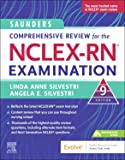
Strategies for Student Success on the Next Generation NCLEX® (NGN) Test Items
Next Generation NCLEX®-style practice questions of all types are illustrated through stand-alone case studies and unfolding case studies. NCSBN Clinical Judgment Measurement Model (NCJMM) is included throughout with case scenarios that integrate the six clinical judgment cognitive skills.
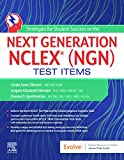
Saunders Q & A Review for the NCLEX-RN® Examination
This edition contains over 6,000 practice questions with each question containing a test-taking strategy and justifications for correct and incorrect answers to enhance review. Questions are organized according to the most recent NCLEX-RN test blueprint Client Needs and Integrated Processes. Questions are written at higher cognitive levels (applying, analyzing, synthesizing, evaluating, and creating) than those on the test itself.
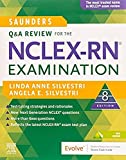
NCLEX-RN Prep Plus by Kaplan
The NCLEX-RN Prep Plus from Kaplan employs expert critical thinking techniques and targeted sample questions. This edition identifies seven types of NGN questions and explains in detail how to approach and answer each type. In addition, it provides 10 critical thinking pathways for analyzing exam questions.
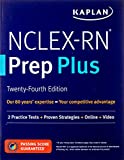
Illustrated Study Guide for the NCLEX-RN® Exam
The 10th edition of the Illustrated Study Guide for the NCLEX-RN Exam, 10th Edition. This study guide gives you a robust, visual, less-intimidating way to remember key facts. 2,500 review questions are now included on the Evolve companion website. 25 additional illustrations and mnemonics make the book more appealing than ever.
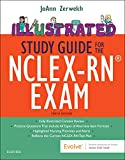
NCLEX RN Examination Prep Flashcards (2023 Edition)
NCLEX RN Exam Review FlashCards Study Guide with Practice Test Questions [Full-Color Cards] from Test Prep Books. These flashcards are ready for use, allowing you to begin studying immediately. Each flash card is color-coded for easy subject identification.
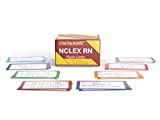
Recommended Links
An investment in knowledge pays the best interest. Keep up the pace and continue learning with these practice quizzes:
- Nursing Test Bank: Free Practice Questions UPDATED!
Our most comprehenisve and updated nursing test bank that includes over 3,500 practice questions covering a wide range of nursing topics that are absolutely free! - NCLEX Questions Nursing Test Bank and Review UPDATED!
Over 1,000+ comprehensive NCLEX practice questions covering different nursing topics. We’ve made a significant effort to provide you with the most challenging questions along with insightful rationales for each question to reinforce learning.

Thank you! Your content is amazing and the practice questions are a lifesaver.
It seems that question 8 and 9 have conflicting information.
Such a great service.
Great job sir…
I admire your work of service and love for fellow RNs. Thank you Sir Matt. Your life is a blessing to many. God bless you more.
Thanks for your uninterrupted support.
The exercise is very helpful. Keep it up.
I have learned from your article, and it is helpful. Thank you for your uninterrupted education
I thought only DM1 can cause ketoacidosis? If I’m assessing a pt with DM2, I wouldn’t expect to see ketonuria. . . .
Question 26: Nurse Robedee is teaching an underweight and emaciated client about the proper methods/techniques when giving insulin. Which one of the following shows a proper technique?
I believe the answer should be 45 degrees because they are underweight and emaciated but the quiz said it should be 90 degrees.
Hi Emilee, this question has been fixed, thank you! :)
Thanks
It help me more
Great job